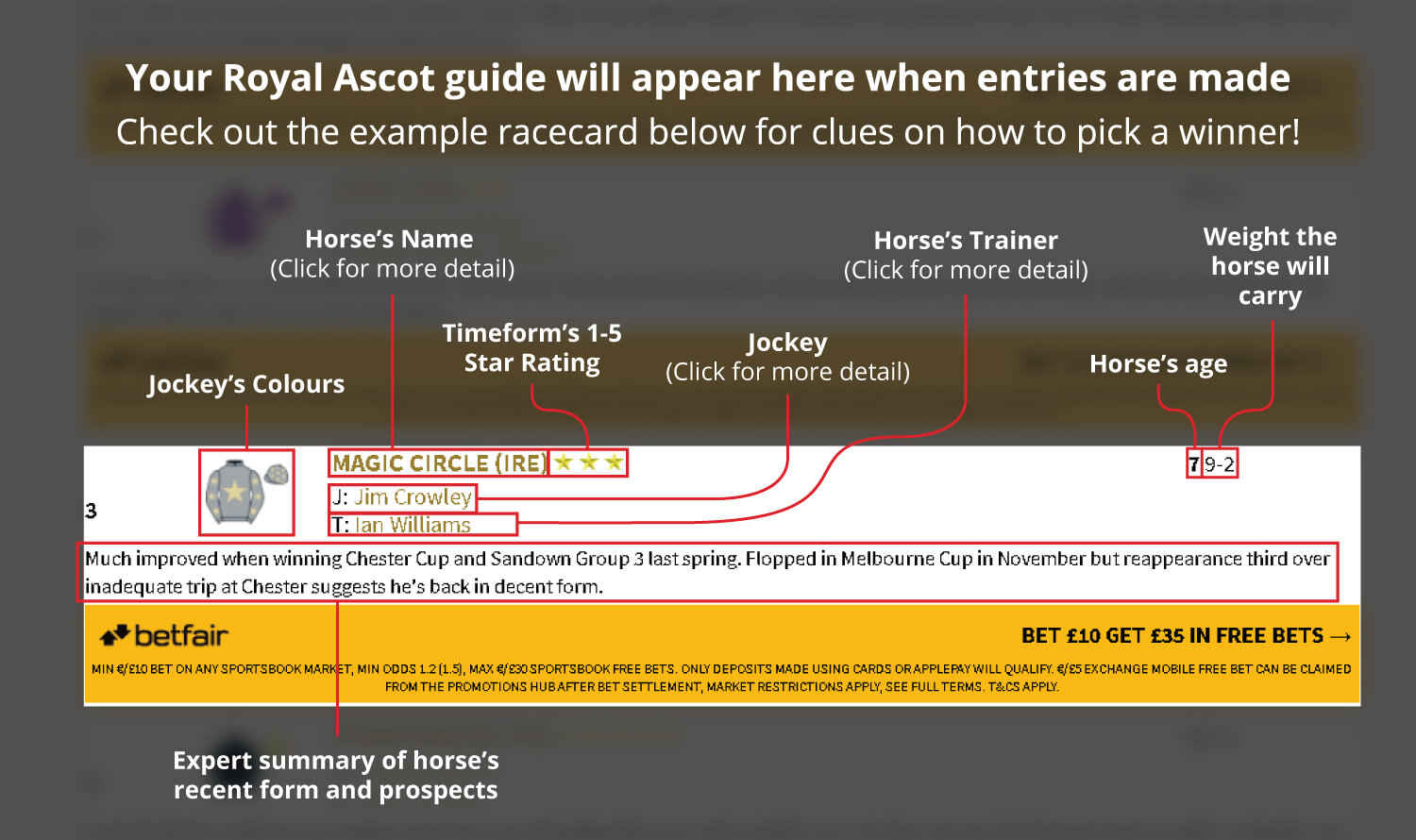
2023 Racecard
The King Edward VII Stakes is a Group 2 Flat race of roughly a mile and a half (1 mile, 3 furlongs and 211 yards), which is held on the fourth day (Friday) of Royal Ascot.
| ENTRY FORM |
SILKS | HORSE JOCKEY & TRAINER |
AGE WGT |
||
|---|---|---|---|---|---|


|
|||||
It is open exclusively to three-year-old colts and geldings, and being the same length as the Epsom Derby, often features runners from that race. It was even called the Ascot Derby when it was first established in 1834, before taking on its current title in 1926.
The Epsom Derby comes up quite early in a horse’s three-year-old season, and this race provides the more late-maturing types with an alternative – but still extremely valuable – midsummer target. That patient approach has certainly paid off with the likes of Nathaniel and Old Persian in recent years. The former won this race in 2011, before going on to win the King George VI and Queen Elizabeth Stakes on his next start, while 2018 winner Old Persian was last seen recording a first Group 1 success in the Dubai Sheema Classic at Meydan in March.
William Buick guided both Nathaniel and Old Persian to their wins in the King Edward VII Stakes, and having also won the race on Eagle Top (2014) and Permian (2017), he is tied with Frankie Dettori as the leading active jockey on four wins. Dettori recorded his first success on subsequent St Leger winner Mutafaweq in 1999, before adding to his tally this century with Campanologist in 2008, Monterosso in 2010 and Across The Stars in 2016.
As far as trainers are concerned, John Porter recorded no fewer than nine wins (1867, 1869, 1882, 1885, 1895, 1896, 1899, 1902 and 1904) around the dawn of the 20th century. Of those still training, Sir Michael Stoute is a long way clear of his peers with seven wins (1983, 1991, 1994, 2002, 2006, 2013 and 2016), with his first winner Shareef Dancer still the last to go on to win the Irish Derby.
Horse racing free bet offers
See all free bet offers















